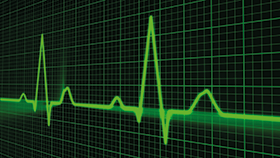

AI-enabled smart cameras can improve patient and employee experience while reducing risk-related costs, while technologies such as enhanced privacy masking increase patient and employee privacy, while enabling vital monitoring of high-risk patients.
In the past year, hospitals, elder care and other healthcare facilities have found themselves overwhelmed with new patients, COVID-19 regulations and other side effects of the pandemic. As efforts focused on the mitigation of pandemic health risks for both patients and staff, routine and elective procedures were halted, only to seesaw back and forth as conditions shifted. Now, decision-makers for healthcare facilities find themselves in search of solutions to help navigate the new healthcare landscape and protect bottom lines.
Artificial intelligence (AI) has been a critical tool in revolutionising critical disease treatments, as well as research and development methods, but it is now also transforming healthcare operations. Security & Safety Things (S&ST) offers a platform for smart cameras that enables the cameras to run a variety of different applications to perform different functions, much like a smartphone. When equipped with AI-enabled video analytics, these cameras are helping healthcare facility operators more efficiently manage day-to-day operations, automate staff-intensive processes, and provide the ability to achieve more efficient, cost-effective operations for a more robust bottom line.
Privacy masking emphasises patient anonymity
Compliance with patient privacy regulations such as HIPAA, GDPR and POPIA is top-of-mind for many medical facilities. Smart video analytics can deploy privacy mask applications to hide a customisable set of objects within the camera’s field of view, such as faces or equipment such as medical monitors, laptops or keyboards – devices where sensitive health data is often displayed. Privacy masking is particularly vital in elder care facilities and memory care units, where enhanced monitoring of elderly and dementia patients is crucial to their safety, without violating privacy.
Increased patient and resident safety
The ability to detect spills and foreign objects in hallways and other highly trafficked areas contributes greatly to decreasing risk of patient harm from slips/falls. Smart cameras reduce these occurrences by detecting spills or other hazards at the time of occurrence, enabling immediate action from staff. Simultaneously, applications can be utilised for fall detection and allow IoT cameras to monitor and analyse patient, visitor and staff behaviour to determine whether a person is standing upright, lying on the floor or remains seated. These analytics allow staff to be alerted in case of unusual behaviour – making every walk from bed to toilet much safer, particularly for elderly and disabled patients.
Increased efficiency in emergency departments
A major pain point in many medical facilities is quick access to emergency departments and overall chokepoints in patient admittance. When connected to patient admission and registration systems, smart cameras equipped with vehicle licence plate recognition apps can automatically log arrival times, licence plate numbers and patients, increasing operational speed and quality of patient admittance. For large hospitals and busy emergency access points, smart cameras can detect obstructions in driveways which, left unattended, could cost approaching ambulances critical seconds. These same cameras offer hospital staff insights into how they can improve patient intake by detecting issues with vehicle and human traffic flow.
Learn more about Security & Safety Things and its open IoT platform for smart cameras at www.securityandsafetythings.com and view the Marketplace Application Store at https://store.securityandsafetythings.com/shop/

© Technews Publishing (Pty) Ltd. | All Rights Reserved.